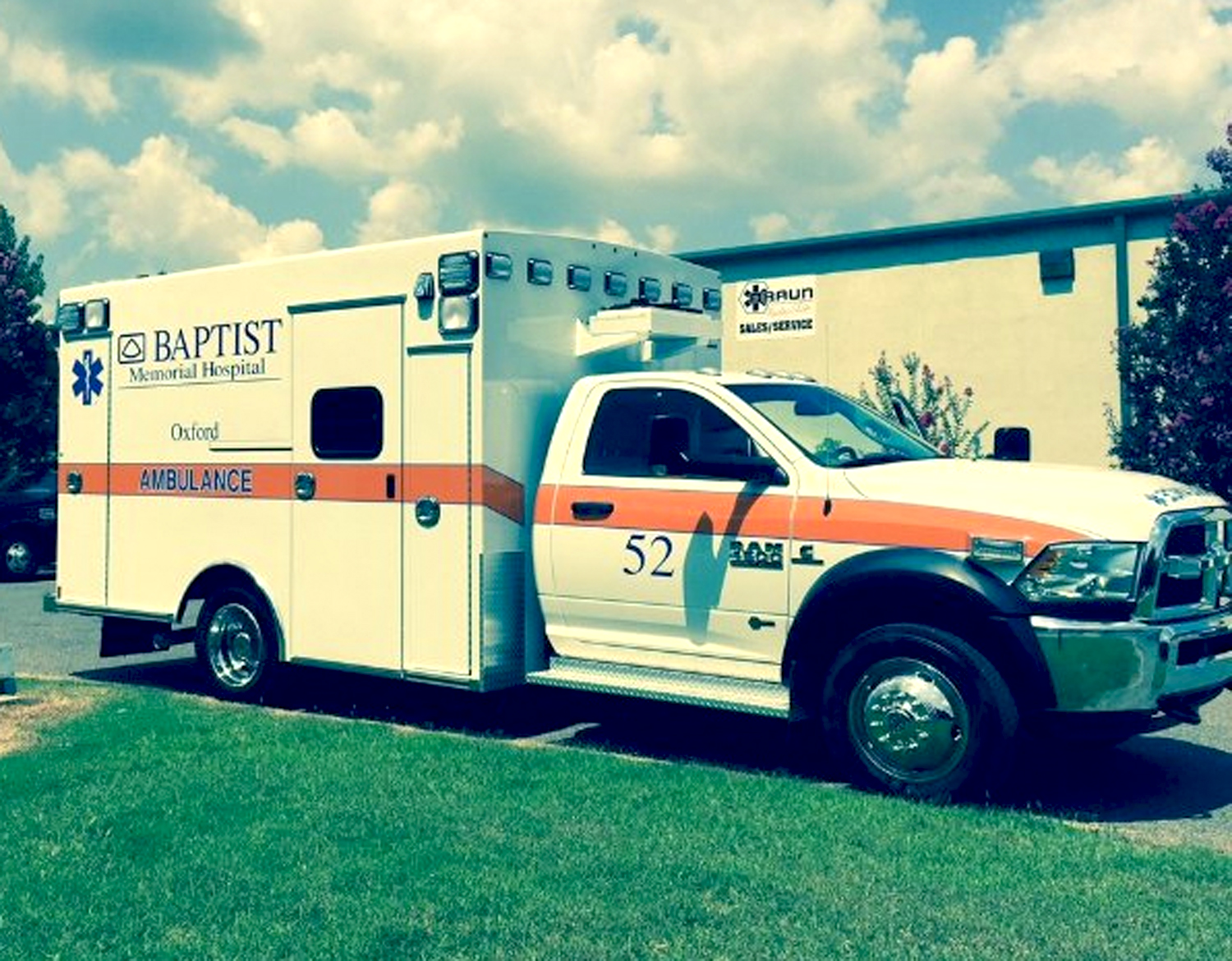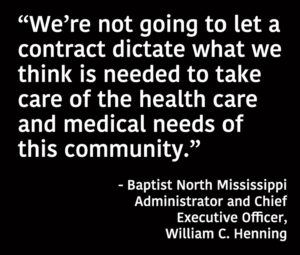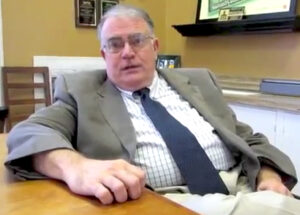
Mediocrity is a slippery slope. Benchmarks and other guidelines are sometimes levied with a “best case scenario” approach, embedding or assigning low expectations to a project.
Could this be happening with Oxford and Lafayette County’s ambulance service, or lack thereof?
It has been reported recently that the response time of Oxford’s ambulance service has been mediocre at best; sometime forcing victims to wait up to 40-minutes for transport to Baptist North Mississippi, which is obviously unacceptable to many… especially the victims and their families.
Baptist North Mississippi’s Administrator and Chief Executive Officer William C. Henning’s impression is that his staff and the medical responders have the situation under control and they remain fluid as our county grows and medical emergencies increase. His office’s scrutiny of the situation is continuous, according to Henning.
According to another hospital spokesperson, Baptist North Mississippi’s response times “have been equivalent to the national average” – which begs the question; who set the benchmark value for “average” and what exactly is that average?
If, as it has been reported, the national ambulance response time is indeed nine minutes – and Baptist rates equally or below that statistic – the response value claims by the hospital strain when factoring in the 40-minute wait by some local victims (mentioned above). The math just does not add up. Or does it?

“For the last four to five years, we’ve had about an average response time of 9-minutes (according to the 911 statistics),” Henning said.
According to Henning, the statistical discrepancy between the 40-minute response time and the reported average of nine minutes can be accounted for by a majority of Baptist’s responses falling below the 9-minute benchmark – sometimes well below. In addition, Henning assures that there are very few calls where the response time is reported as 40-minutes.
“Fifty percent of our calls (in 2015) were done in seven minutes or less,” Henning said. “Ten percent of our calls were done in less than three minutes.”
Regardless, it seems heavy dissection and scrutiny of that data remains a necessity and will be valuable as Lafayette County grows and – along with it – our need for timely and reliable ambulance services. As of this writing, there are three ambulances that service our area and three crews who man those vehicles; with the heaviest saturation being placed during peak hours (daytime shifts) where all three crews are available and on call.
The Oxford Board of Alderman, along with Mayor Pat Patterson, have been tasked with organizing work sessions to address the problem and see if possible ambulance additions are in order for Lafayette County. Those meetings have already begun (both casually and formally), vindicating this discussion.
Other options include procuring additional private ambulance services to supplement Oxford’s existing ambulance contract with BMH-North Mississippi. That contract was drawn up in 2011.

“Here’s the challenge: Baptist has two crews that have to man the ambulances 24/7,” Sullivan-Gonzalez said. “So, if there’s a call, and then there’s a second call, and then there’s a third call, then the first call (ambulance) has to circulate back to go do the third call.”
“It benefits Baptist to transport rather than make local runs,” Sullivan-Gonzalez explains. “The way they count that is, two ambulances are active when in fact, only one is.”
 “Baptist (hospital) of course wants to serve the people, but they’ve created an administrative trap where profit is driving decision making,” Sullivan-Gonzalez continued. “They refuse to adjust ambulance presence versus the increase in population… both student and county. They have a structural difficulty ahead. They (hospital administrators) are following the letter of the contract which states it (population growth) is not their responsibility.”
“Baptist (hospital) of course wants to serve the people, but they’ve created an administrative trap where profit is driving decision making,” Sullivan-Gonzalez continued. “They refuse to adjust ambulance presence versus the increase in population… both student and county. They have a structural difficulty ahead. They (hospital administrators) are following the letter of the contract which states it (population growth) is not their responsibility.”
However, according to Henning, this is not the case.
When asked whether or not his office would scrutinize the number of ambulances and crews needed as the demand grows in Lafayette County, Henning said, “We do that continuously. I always have our ambulance services review our call volume; look at what our response times are and particularly, our non-emergency transports.”
“We average about 14 transports a day,” Henning added. “So, it’s not like we have 50 calls to go out on. A couple of years ago, I think the number of transports a day were 13; so yes, the county has grown tremendously but it’s not a like a one-to-one growth on the ambulance service.”
The above situation and statistics have forced Baptist to consider adding non-emergency transport (part-time) units as an option to free up their available “regular” ambulances for emergencies. This option has been considered regularly throughout the years.
“We’re looking at different options; do we need to consider changes in the service? We’re always looking at that (possibility),” Henning said.
The point of the above; the trickle down effect is obvious as the out of county transport situations would most definitely skew responder statistics. If Lafayette County is missing an ambulance due to a transport situation – that would in fact leave our entire area with only one ambulance and crew during nighttime hours for the duration of the transport. What happens if multiple ambulance calls are received during that timespan?
 This question and others are at the forefront of this situation and are being addressed by hospital administrators, Mayor Patterson and the Oxford aldermen as they consider the possibility of additional ambulances and how they might be acquired; as well as other options (including non-emergency transport) that will be open for discussion as the issue progresses.
This question and others are at the forefront of this situation and are being addressed by hospital administrators, Mayor Patterson and the Oxford aldermen as they consider the possibility of additional ambulances and how they might be acquired; as well as other options (including non-emergency transport) that will be open for discussion as the issue progresses.
“We’re not going to let a contract dictate what we think is needed to take care of the health care and medical needs of this community,” Henning concluded. “If we see that there’s a need based on today’s statistics – that there’s a need for more (ambulance) services in the county – we’re going to meet those needs. Just because the contract says something, it doesn’t mean we can’t go beyond that (to meet Lafayette County’s needs).”

Only time (and demand) will tell how this situation plays out as Lafayette County and Ole Miss grow. The good news is that the issue has recently moved to the forefront, so that those concerned – the ones that can make a difference – can hash this out in a positive direction.
Collectively, let’s pray that a tragedy doesn’t force the issue.
Jeff McVay is a staff writer and graphic designer for Hottytoddy.com. He can be reached at jeff.mcvay@hottytoddy.com.
Follow HottyToddy.com on Instagram, Twitter and Snapchat @hottytoddynews. Like its Facebook page: If You Love Oxford and Ole Miss…


